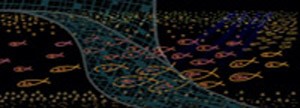Most of the worldwide marine fish resources are outside safe biological limits. Currently, the 77% of the 600 marine fish stocks monitored by the Food and Agriculture Organization of the United Nations (FAO) are fully exploited or overexploited (FAO 2011). In addition to the reduction of exploited populations, overfishing produces a decrease in the potential productivity of marine stocks, which entails important losses in fishing landings, employments and economic revenues (Crilly and Esteban 2012). Furthermore, the excessive exploitation of marine stocks makes them more susceptible to environmental variability and global change, and indeed to collapse (Rochet 2009).
Since 1950´s worldwide collapse of different sardine, pilchard and anchoveta stocks as result of an increasing fishing pressure, rose the awareness about the limitation of resources and the need of increasing ecological knowledge and aplying it to fisheries management (Garcia et al. 2003). The massive collapse of all the Northwest Atlantic cod Gadus morhua stocks since 1990, including the Flemish Cap cod stock (see the Introduction section), not just triggered the change of fisheries management toward sustainable practices and the conservation of exploited species, but also the preservation of the whole ecosystem for future generations. In 1995 the FAO Code of Conduct for Responsible Fisheries (FAO 1995) and the basis for a Precautionary Approach to Fisheries Management were defined (FAO 1996).
Traditional approaches to fisheries management considered species as independent populations and were managed under this vision, i.e. from a monospecific approach. Total Allowable Catches (TACs) for each species were set regardless of the interactions involving predation and competition with other marine stocks, many of them also commercially exploited. However, it has been proved that juveniles of many fish species support an intense predation rate being the main prey item of many piscivorous species (Bailey 1994, Bax 1998), with annual predation mortality higher than 70% (Wooton 1998). The biological reference points estimated by single species assessments depend entirely on the assumption of constant natural mortality (usually 0.2). However, when estimates of predation mortality are considered, the resulting reference points are far from being constant (Gislason 1999, Collie et al. 2003). Hence, traditional single-species estimates of natural mortality can lead to overestimates of stock-biomass per recruit (Pinnegar et al. 2008) and may favor declines in population or even the collapse of the stock. Consequently, a multispecies management approach considering exploited species like part of a complex system of interacting species is needed for a more realistic management of fisheries.

Food web model for the Flemish Cap. Original figure from the PhD. Thesis of Alfonso Pérez Rodríguez.
Since 1949 NAFO is in charge of the rational management and conservation of most fishery resources in the Northwest Atlantic Convention Area. Upto date, exploited species are managed under a monospecific approach based in TACs. However, since early 2000s new approaches are being tackled which was reflected in the creation, in 2008, of the Working Group for the Ecosystem Approach to Fisheries Management (WGEAFM), nowadays the Working Group Ecosystem Science and Assessment (WGESA). The WGESA is an international research group with the task of providing advice to the Scientific Council of NAFO in matters like species interactions, Vulnerable Marine Ecosystems (VME), fisheries potential production, eco-region delimitation, environmentally driven changes in the ecosystem and fish populations, etc. (NAFO 2010c, b). GADCAP project aims to be a major step toward the ecosystem approach in NAFO through the devolopment of the first multispecies stock assessment model in the NAFO area, in constant interaction and feedback with the WGESA.
